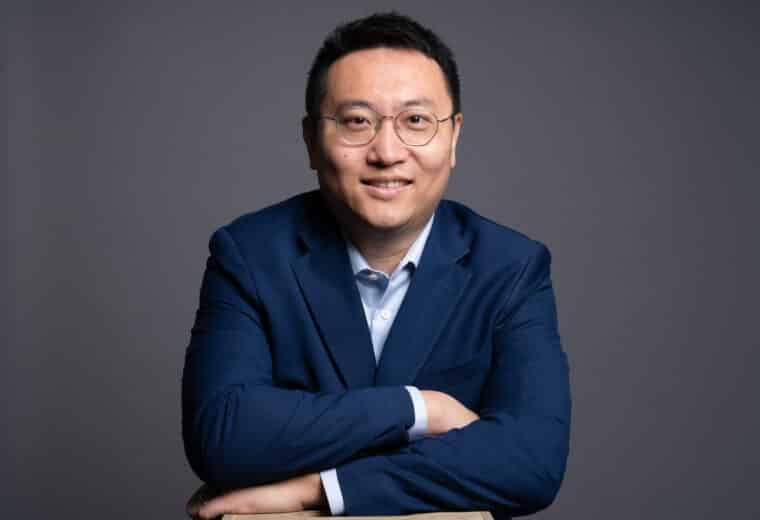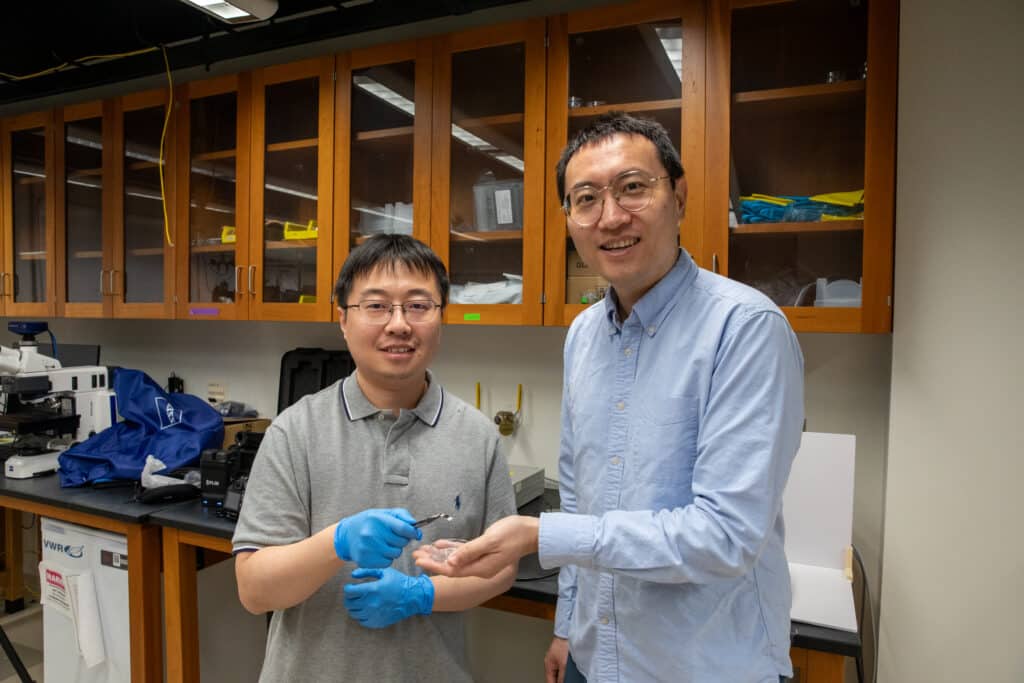
Haozhe “Harry” Wang Receives NSF CAREER Award to Test the Limits of MXenes
Competitive five-year grant will help Wang understand the potential of a 2D class of materials with high-performing characteristics.
Breakthroughs in MXene research from Haozhe “Harry” Wang show potential for these 2D, photoreactive materials.

Haozhe “Harry” Wang, assistant professor of electrical and computer engineering (ECE) at Duke University and an expert in developing new methods for manufacturing materials, continues to push the boundaries in MXene research.
Watch the video below to see MXenes move when exposed to light.
MXenes (pronounced max-eens) are a novel 2D class of metallic materials boasting high electrical conductivity and strong photothermal capabilities, meaning they can convert light to heat. That heat makes water evaporate, which allows the MXene to shrink, curl, bend or twist when exposed to light.
Although already useful in applications like energy storage, desalination and soft robotics, there is still much to explore about the potential of MXenes. Wang received an NSF CAREER award this spring to optimize the fabrication process of MXenes and characterize those improvements.

One challenge with the manufacturing of MXenes is that they are only a few atoms thick, and defects are amplified on that scale. Using a technique called plasma-enabled atomic layer etching (plasma-ALE), Wang and members of his lab, including postdoctoral associate Xingjian Hu, can remove or replace individual surface functional groups – akin to atomic surgery.
New quantitative analysis from the Wang lab published in Matter found that the plasma-ALE process improves MXene conductivity by 80 percent and bends up to 165 degrees, which outperforms similar 2D materials.
The Wang lab’s goal is to develop MXene materials to enable more flexible, programmable and resilient soft robotics, all controlled with nothing but light.

Competitive five-year grant will help Wang understand the potential of a 2D class of materials with high-performing characteristics.

New faculty member Haozhe “Harry” Wang develops both additive and subtractive manufacturing processes to enable the mass production of future quantum systems

Stabilizing the glassy state of materials using rare instrumentation unlocks a new line of research for perovskites